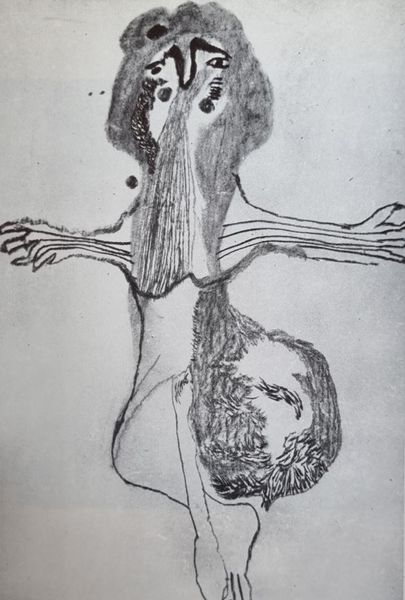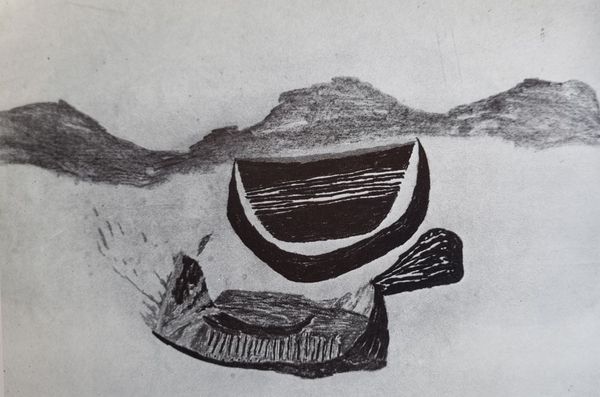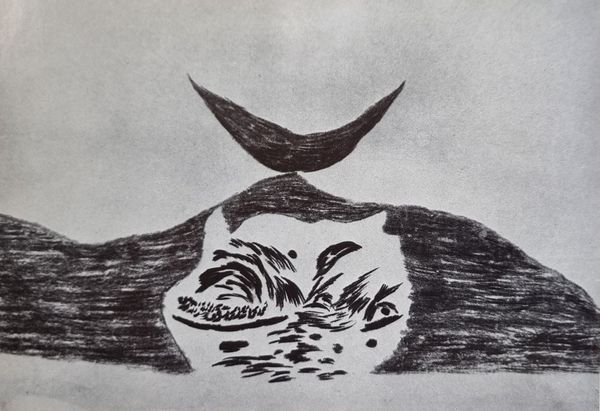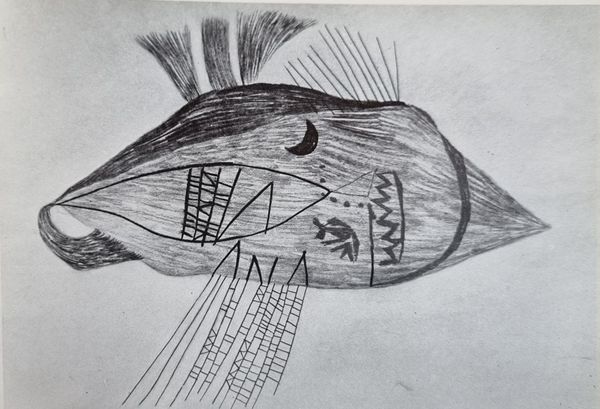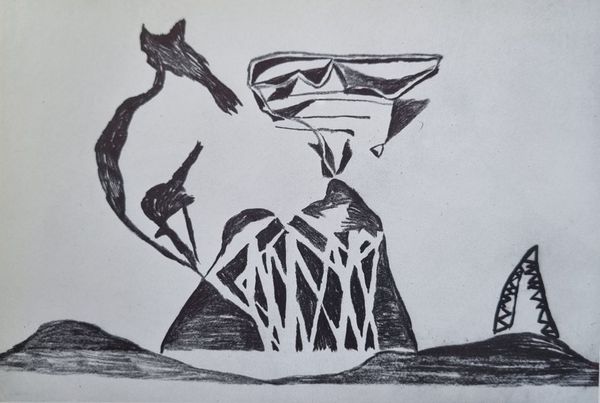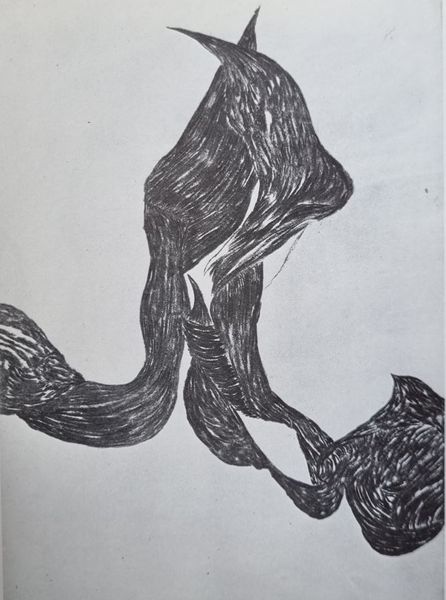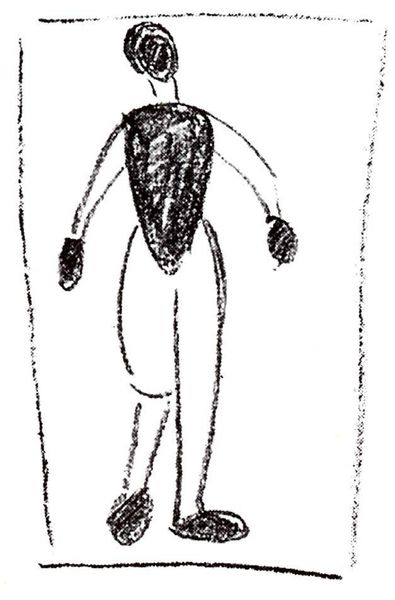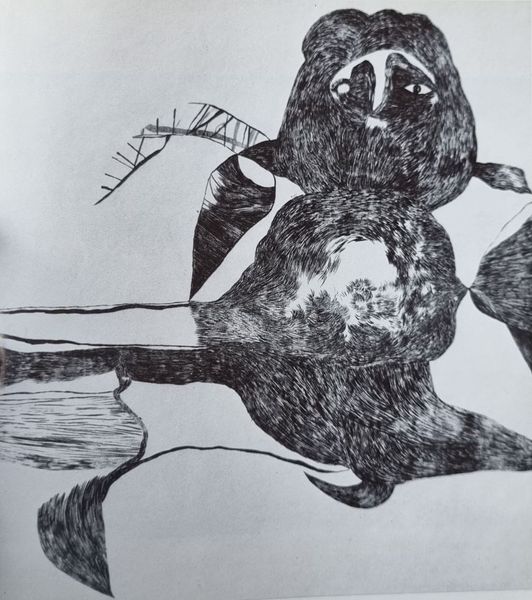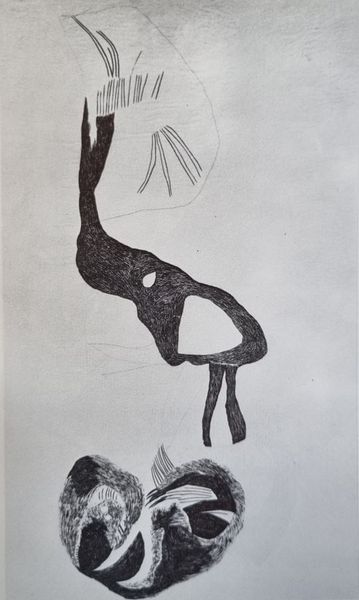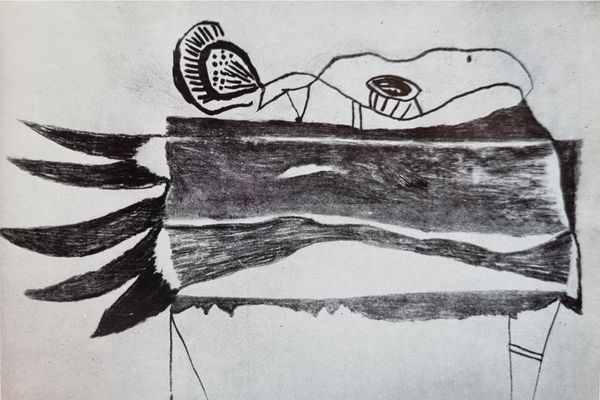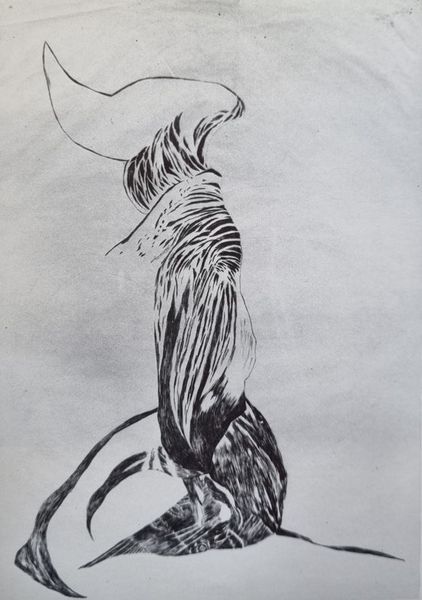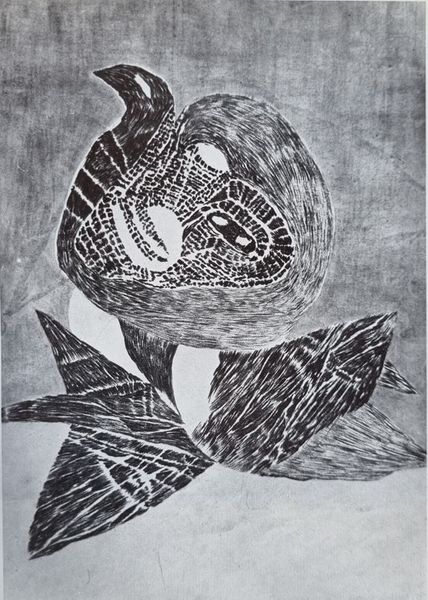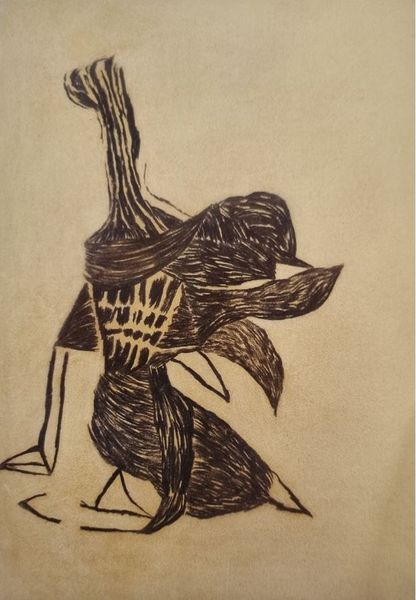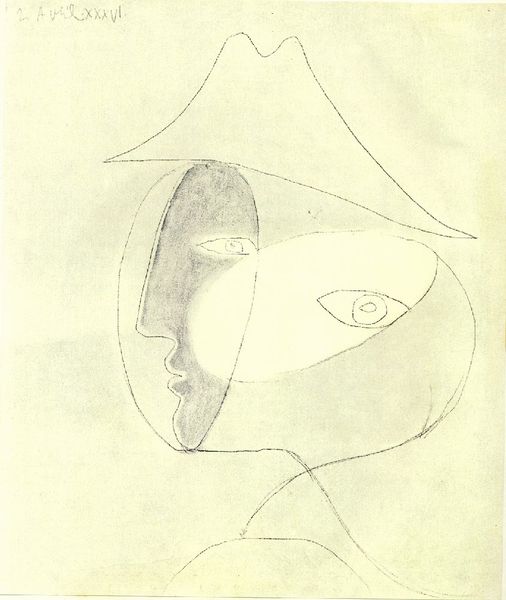
Copyright: Public domain
Editor: This is Vajda Lajos's 1938 ink drawing on paper, "Mask with Braid." It feels almost like a symbolic map, unsettling yet somehow familiar. How do you interpret this work? Curator: The power of masks lies in their capacity to be both revealing and concealing. Notice how Vajda abstracts the facial features. What is communicated through the braided element dangling below? Perhaps a release of pent-up expression, or a tangible sense of burdened history. The mask appears to be flayed open across the forehead. Editor: I see what you mean. The braid could represent the unravelling of identity, almost like a shedding. The open forehead does imply a certain vulnerability. Curator: Exactly. This mask isn’t merely decorative; it’s a vessel brimming with symbolic intent. This disjunction between the ordered parallel lines in the center and the erratic and wild outer forms create a tension, no? Where might we find parallel, but ultimately fractured identities in the cultural landscape of 1938, I wonder? Editor: It is hard not to read the approach of war into the sense of tension between order and chaos here. Perhaps Lajos sensed it, too. I hadn’t thought of the cultural context so directly. Thank you! Curator: Art serves as a record of personal and shared emotional responses, of felt-knowledge beyond dates and events, it provides us continuity with lived cultural memory. Now, how might your own interpretation evolve by engaging with what we have noticed here?
Comments
No comments
Be the first to comment and join the conversation on the ultimate creative platform.
